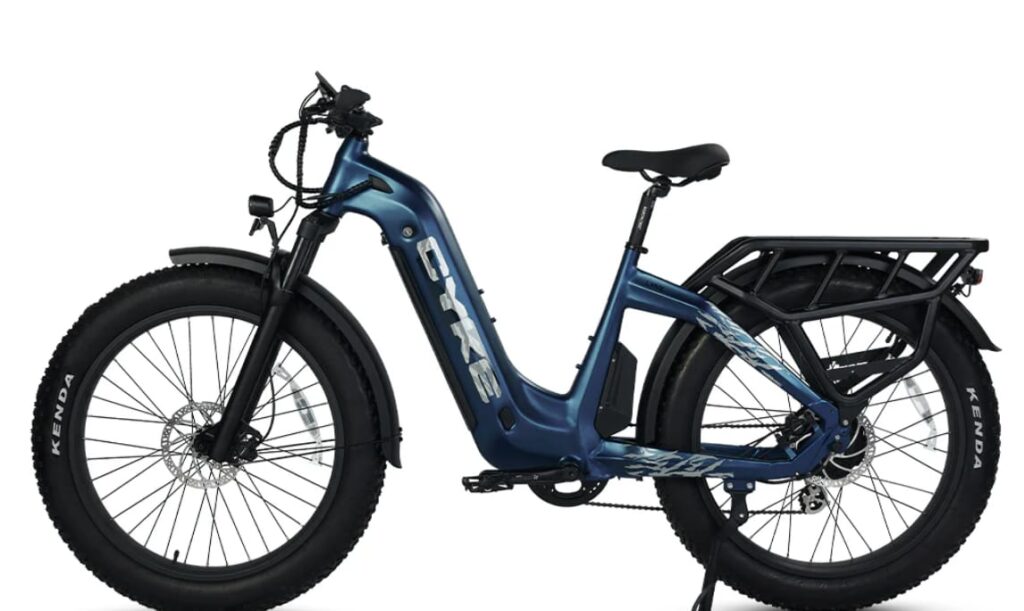Electric bikes have transformed the cycling world, offering a blend of traditional pedal power with the added boost of an electric motor. Among the various types of electric bikes available, fat tire electric bikes have gained popularity for their ability to tackle tough terrain with ease. However, one common question arises among potential buyers and enthusiasts alike: “How much do fat tire electric bikes weigh?” In this comprehensive guide, we’ll dive into the factors that contribute to the weight of these robust machines and what you can expect when considering a purchase.
Understanding Fat Tire Electric BikeConstruction
To comprehend the weight of fat tire electric bikes, it’s essential to look at their construction. These bikes are designed to be durable and capable of handling a variety of surfaces, from snowy trails to sandy beaches.
Frame Material
One of the most significant factors in the weight of any bike is the frame material. Fat tire electric bikes often have a lightweight frame made from materials such as aluminum or carbon fiber to offset the added weight of other components.
The Motor and Battery
The electric motor and battery are the heart of an e-bike’s additional weight. These components vary in size and capacity, which can significantly impact the overall weight of the bike.
Fat Tires and Rims
The defining feature of these bikes, the fat tires, are broader and larger than standard tires, providing stability and traction but also adding to the bike’s weight. The rims that support these tires must also be sturdy, contributing additional heft.
Average Weight of Fat Tire Electric Bikes
When it comes to fat tire electric bikes weight, there’s a range you can expect. Typically, these bikes weigh between 50 to 80 pounds (23 to 36 kg). This spectrum accounts for the variation in frame materials, battery and motor sizes, and additional components.
Comparing to Traditional and Electric Mountain Bikes
In comparison to traditional mountain bikes or standard electric bikes, fat tire electric bikes are generally heavier. Traditional mountain bikes can weigh as little as 25 pounds (11 kg), while electric mountain bikes without fat tires usually fall between 40 to 70 pounds (18 to 32 kg).
Advantages and Disadvantages of Heavier E-Bikes
The weight of fat tire electric bikes comes with both pros and cons that potential owners should consider.
Stability and Traction
The extra weight, particularly from the fat tires, can increase stability and traction, making these bikes ideal for off-road adventures and challenging conditions.
Effort and Handling
Heavier bikes may require more effort to pedal without electric assistance and can be more challenging to handle, especially for those not accustomed to the weight.
Choosing the Right Fat Tire Electric Bike
When selecting a fat tire electric bike, it’s important to consider the weight as it relates to your needs and preferences.
Personal Strength and Storage
Evaluate whether you have the strength to manage a heavier bike and the means to store and transport it. Will you need to carry it up stairs or lift it onto a bike rack?
Battery Life and Range
A heavier bike may drain the battery more quickly. Consider the battery life and range in relation to the bike’s weight and your typical riding distances.
Lightweight Options in the Market
For those concerned about weight, there are lighter fat tire electric bike models available. These usually feature a more minimalist design, smaller motors, and batteries to shed pounds where possible.
Innovations in Lightweight Frames
Advances in materials and design mean that even with a robust set of features, some fat tire electric bikes manage to maintain a lightweight frame. Researching and comparing the latest models can lead to finding a bike that strikes the right balance for you.
Maintenance and Weight Implications
Maintaining a heavier electric bike can require a bit more effort due to the weight of the components. Regular check-ups and servicing can ensure that the added weight does not lead to premature wear and tear.
Impact on Tires and Brakes
The weight of the bike can affect the rate at which tires and brakes wear down. It’s crucial to monitor these components regularly and replace them when necessary.
To sum up
Fat tire electric bikes offer a unique and versatile cycling experience, but their weight is an important consideration for any prospective owner. By understanding the factors contributing to the weight, considering your personal needs, and exploring the various models available, you can find an e-bike that provides the right balance of heft and performance for your adventures.
Whether you’re seeking the added challenge of a heavier bike or the ease of a lighter model, there’s a fat tire electric bike out there that will meet your needs. Remember to factor in maintenance and the impact of weight on the bike’s components to keep your ride running smoothly for years to come.
Fat tire electric bikes are typically heavier than their traditional counterparts due to their sturdy construction and the addition of an electric motor and battery. However, this weight can enhance stability and traction while offering a unique riding experience. When choosing a bike, consider the weight as it relates to your ability to handle, store, and maintain the bike, and always keep an eye on the wear and tear of critical components. With the right care and selection, your fat tire electric bike will serve as a reliable and enjoyable mode of transportation and recreation.

